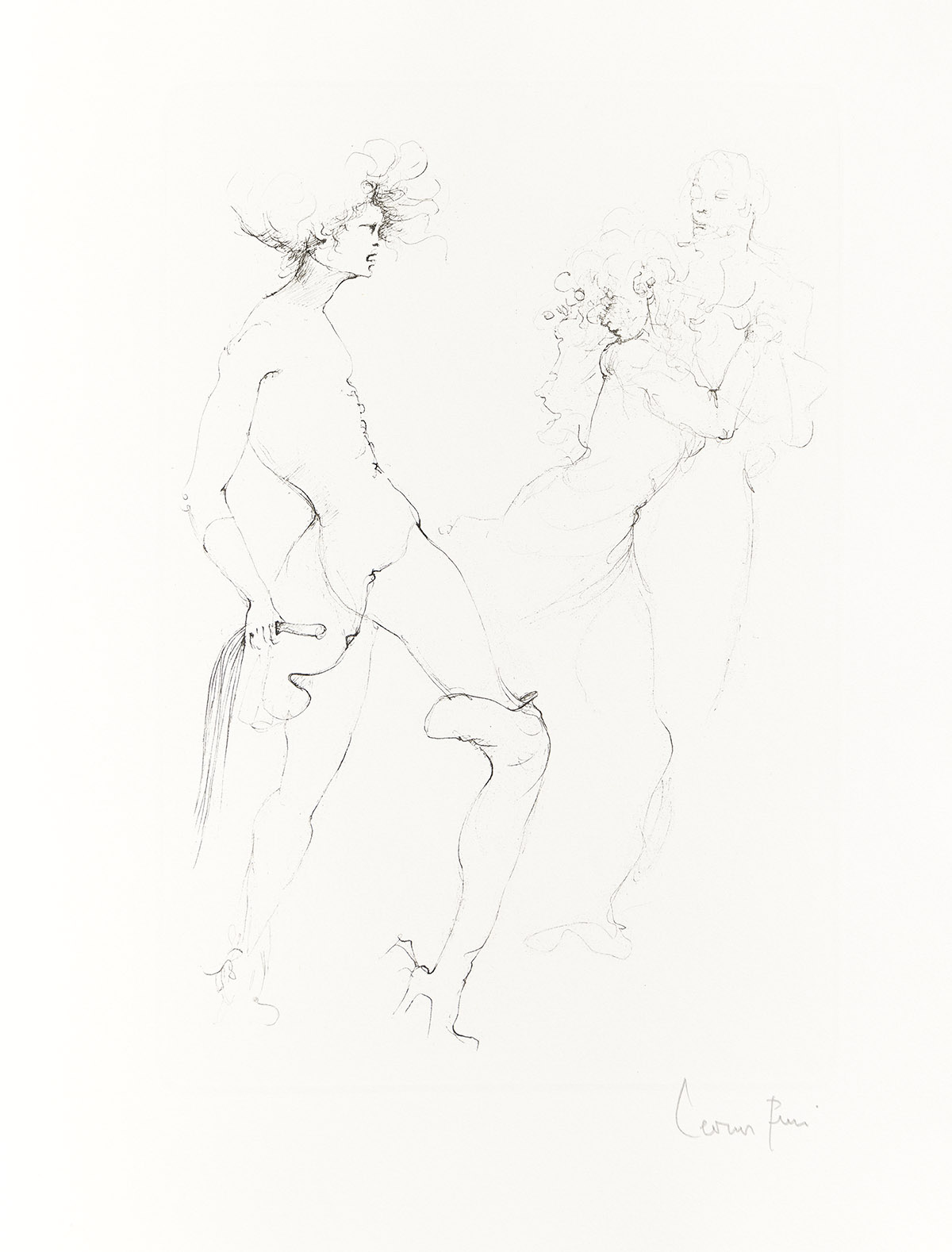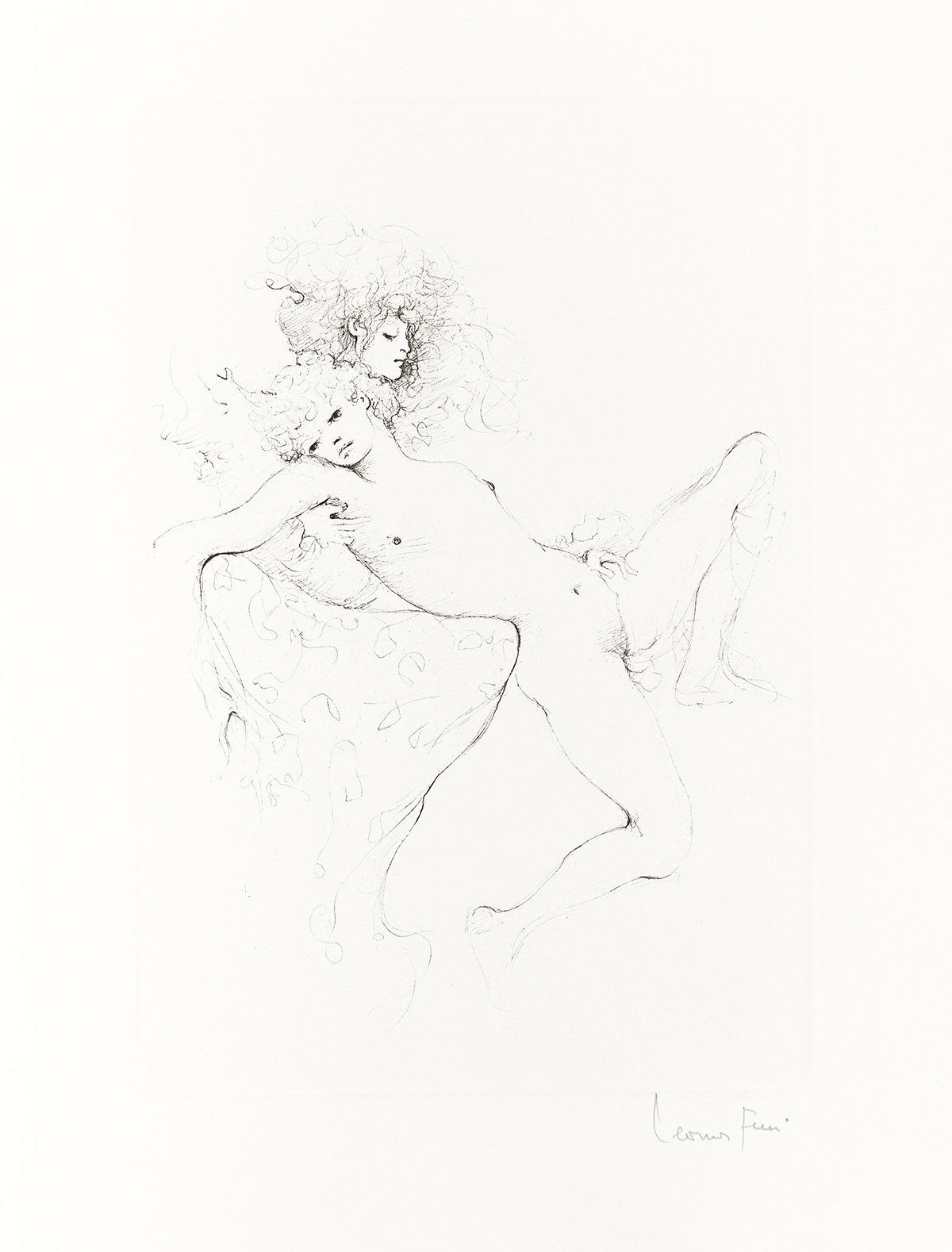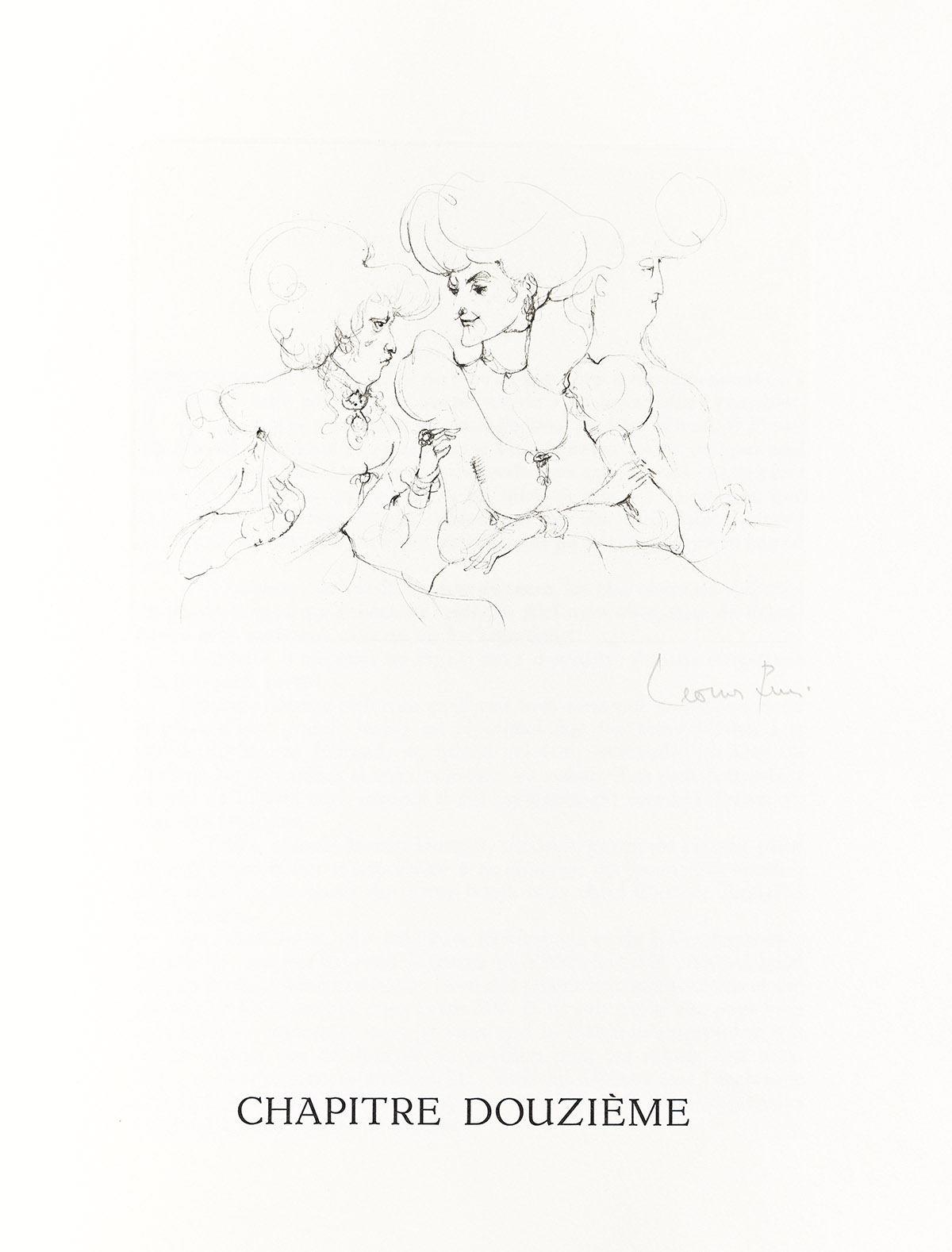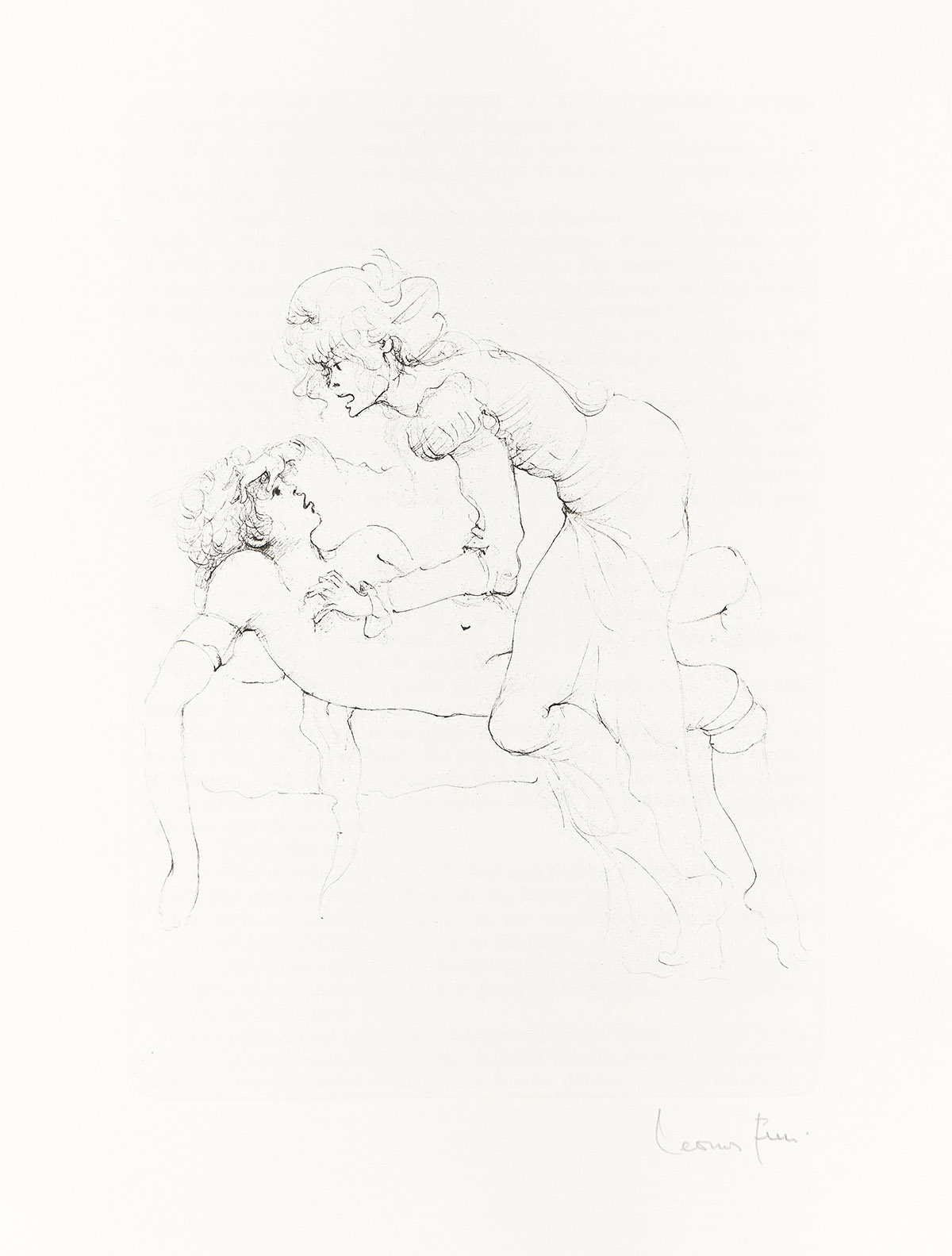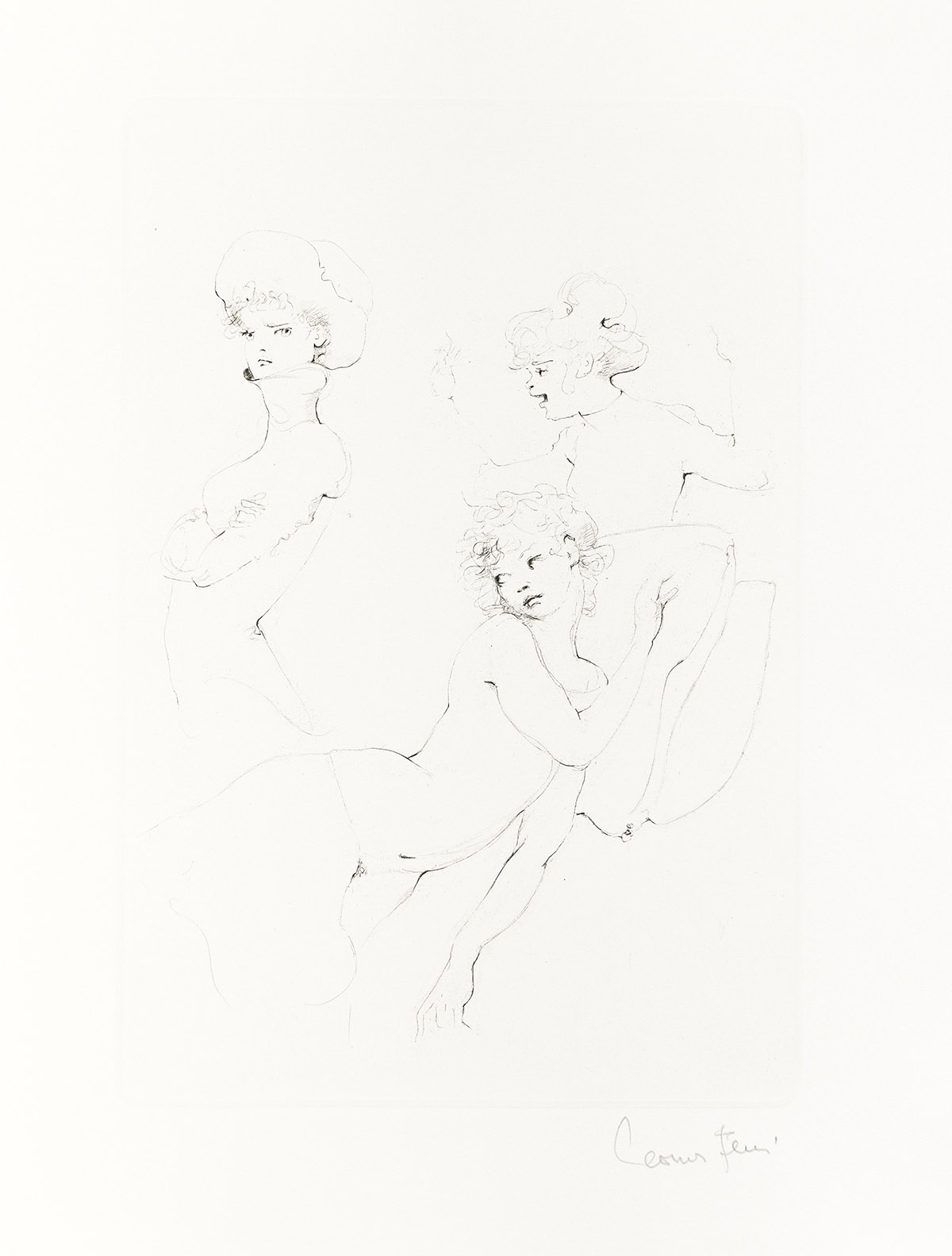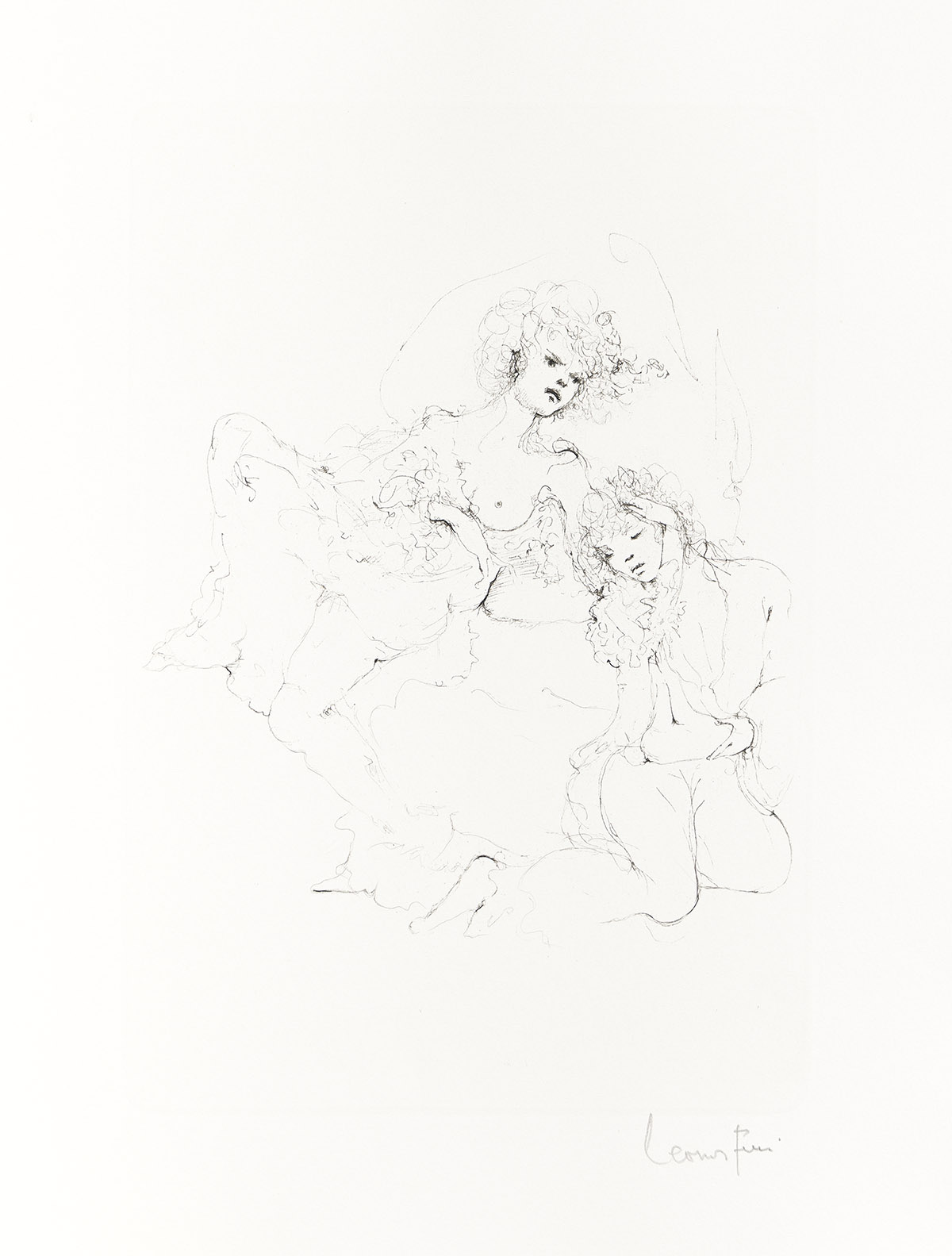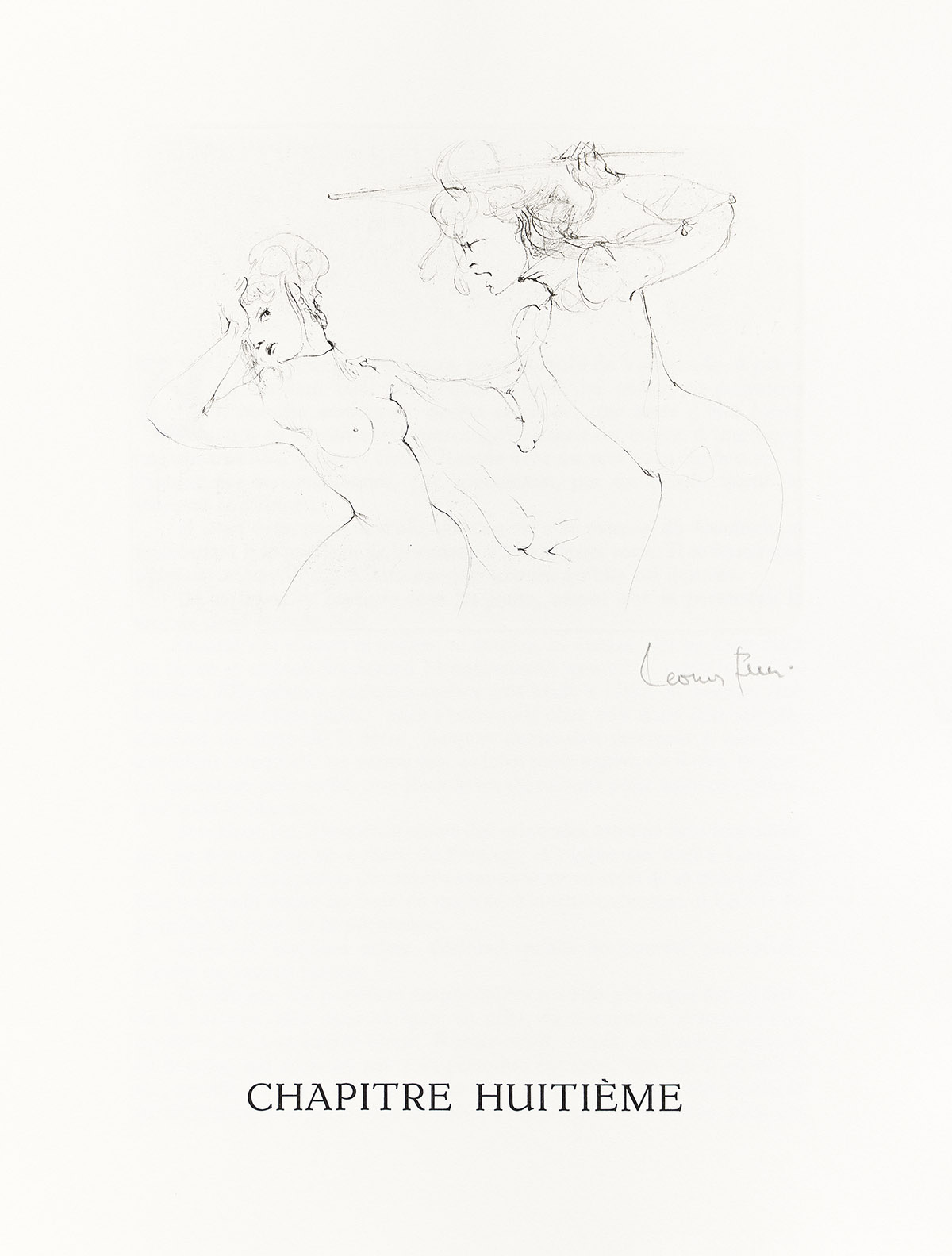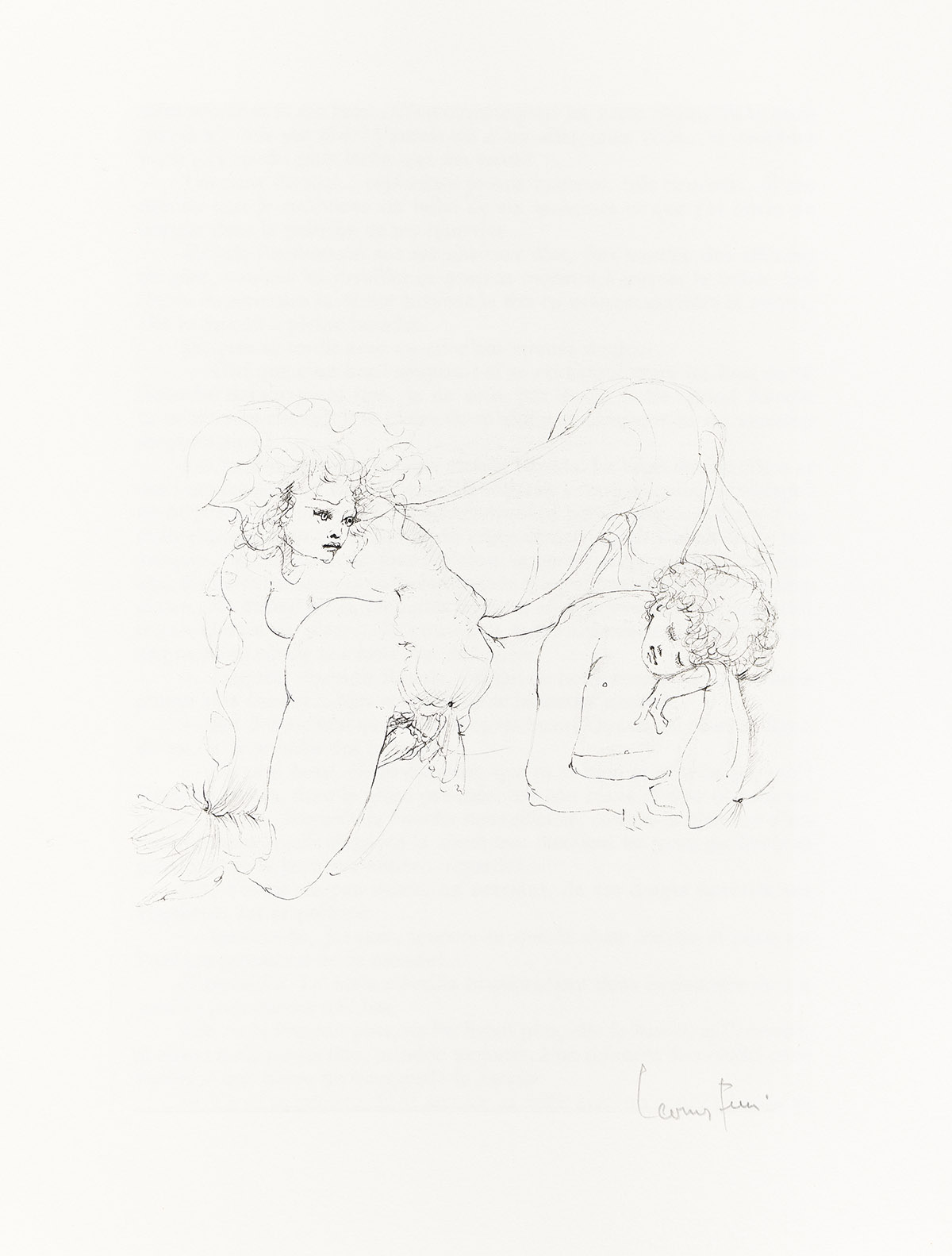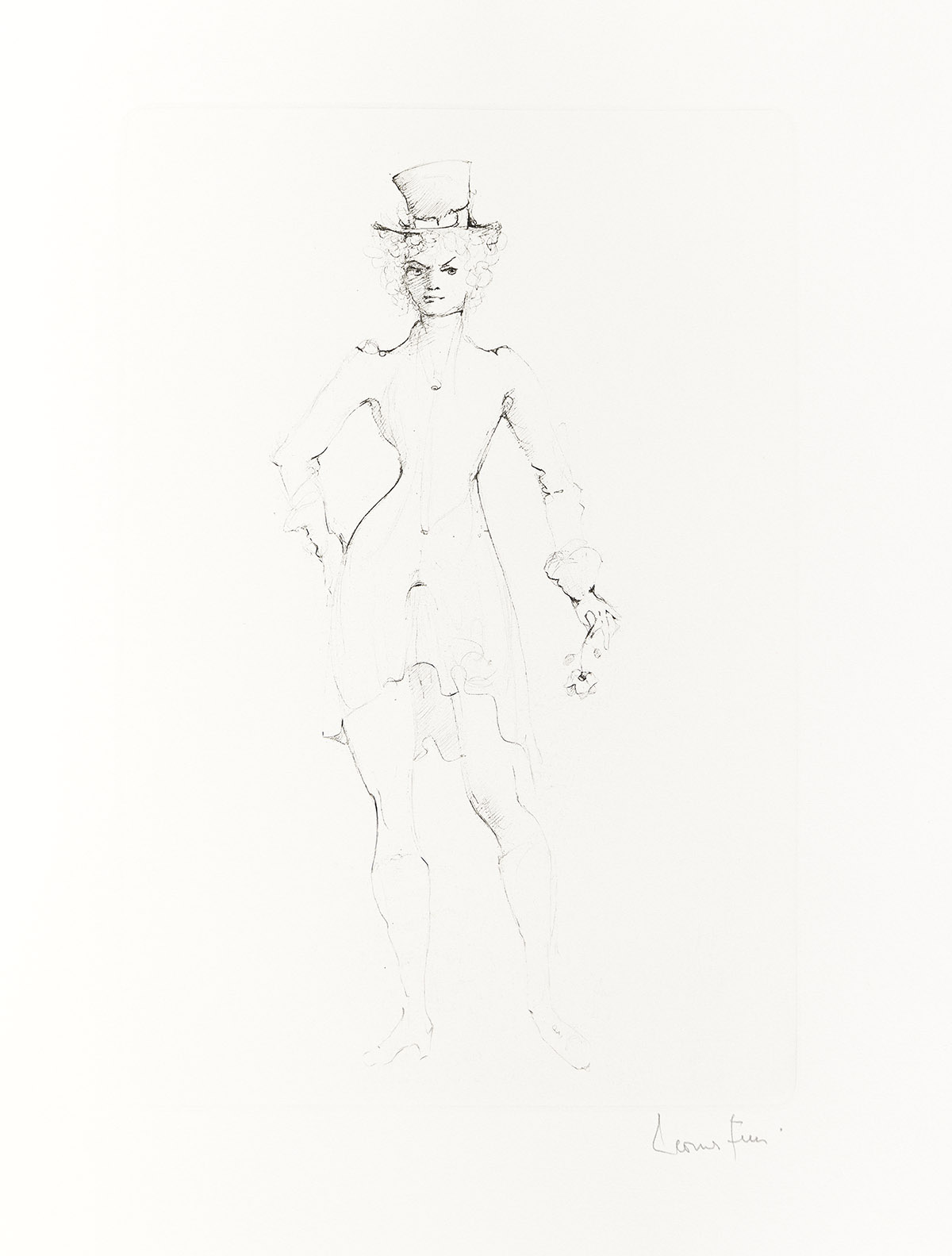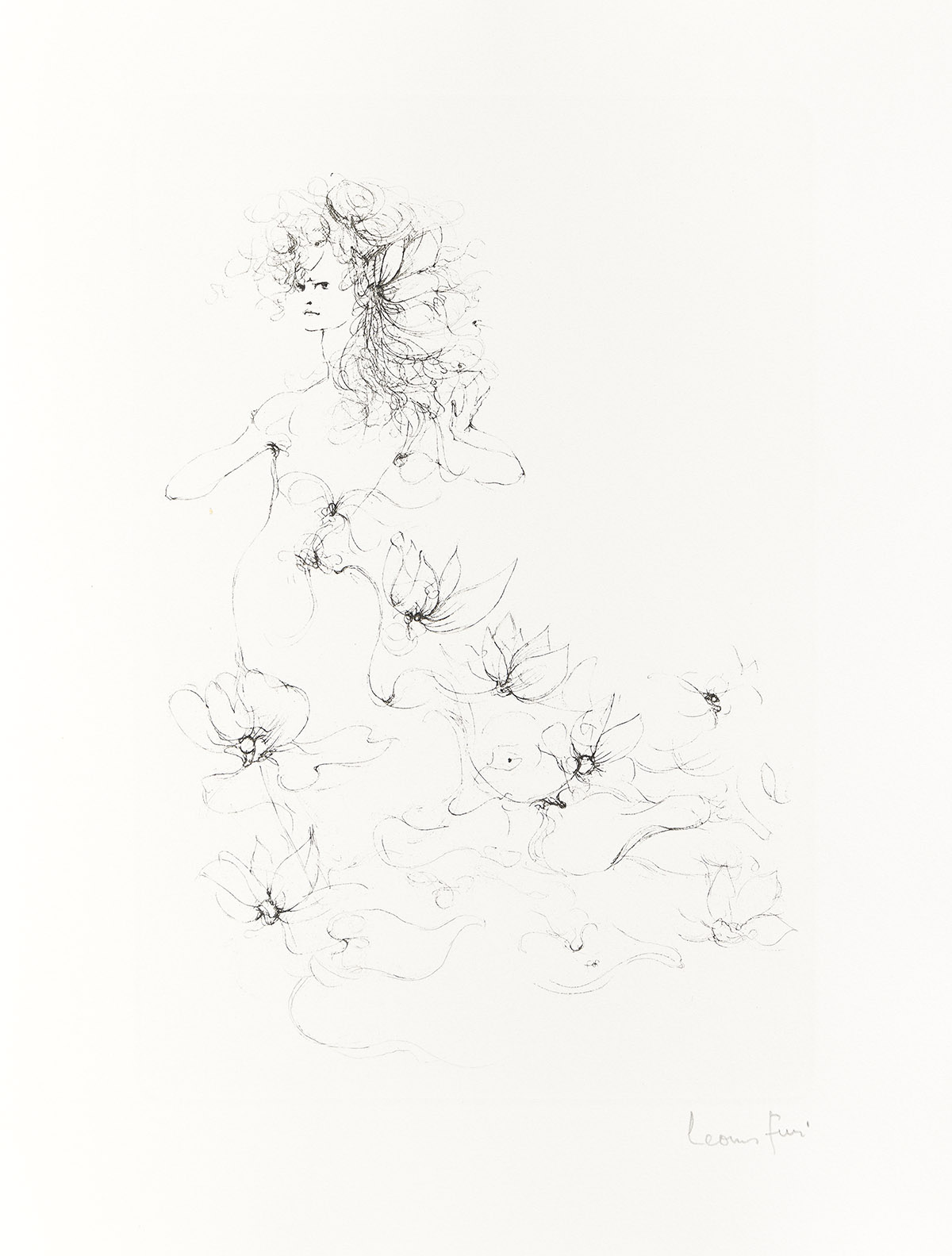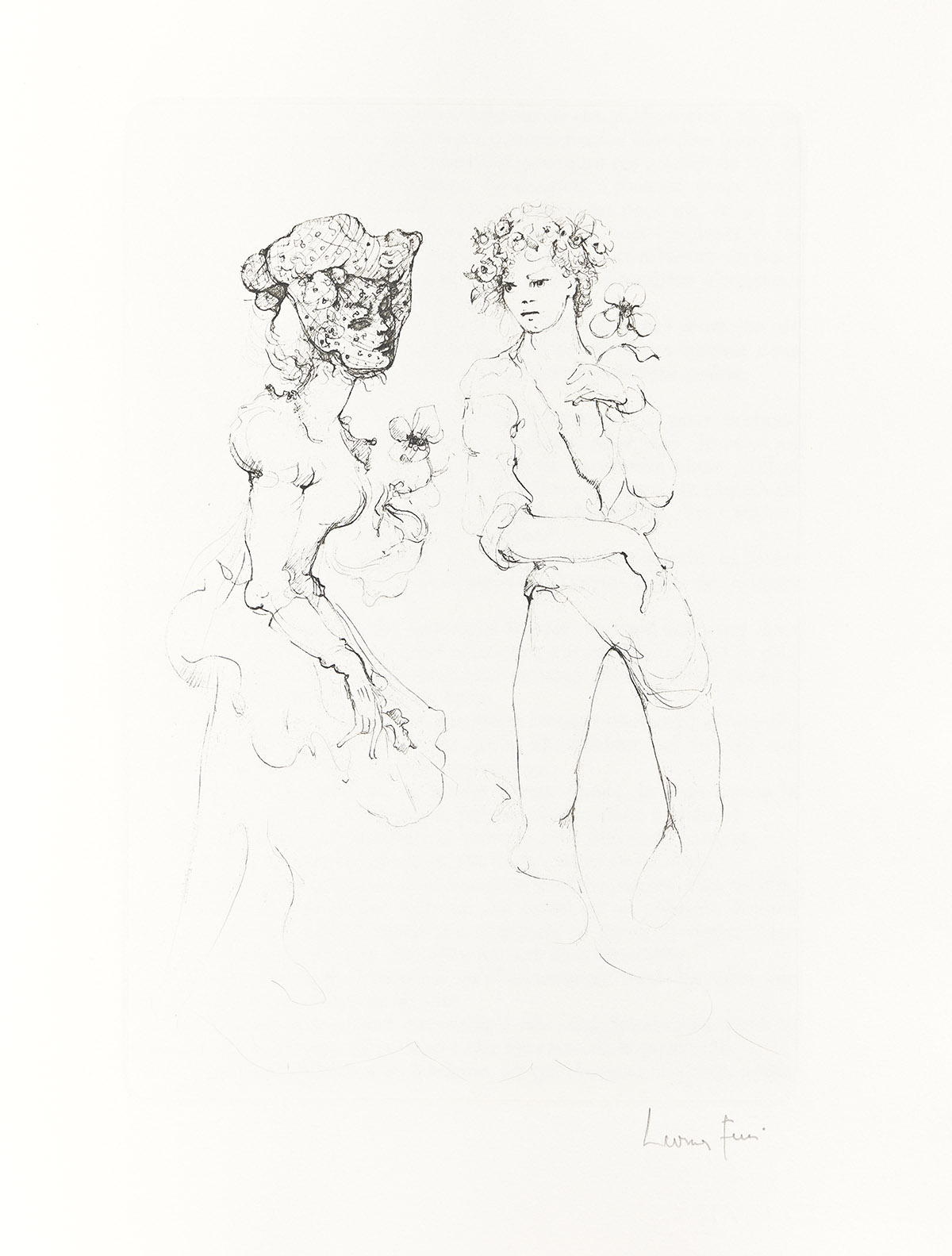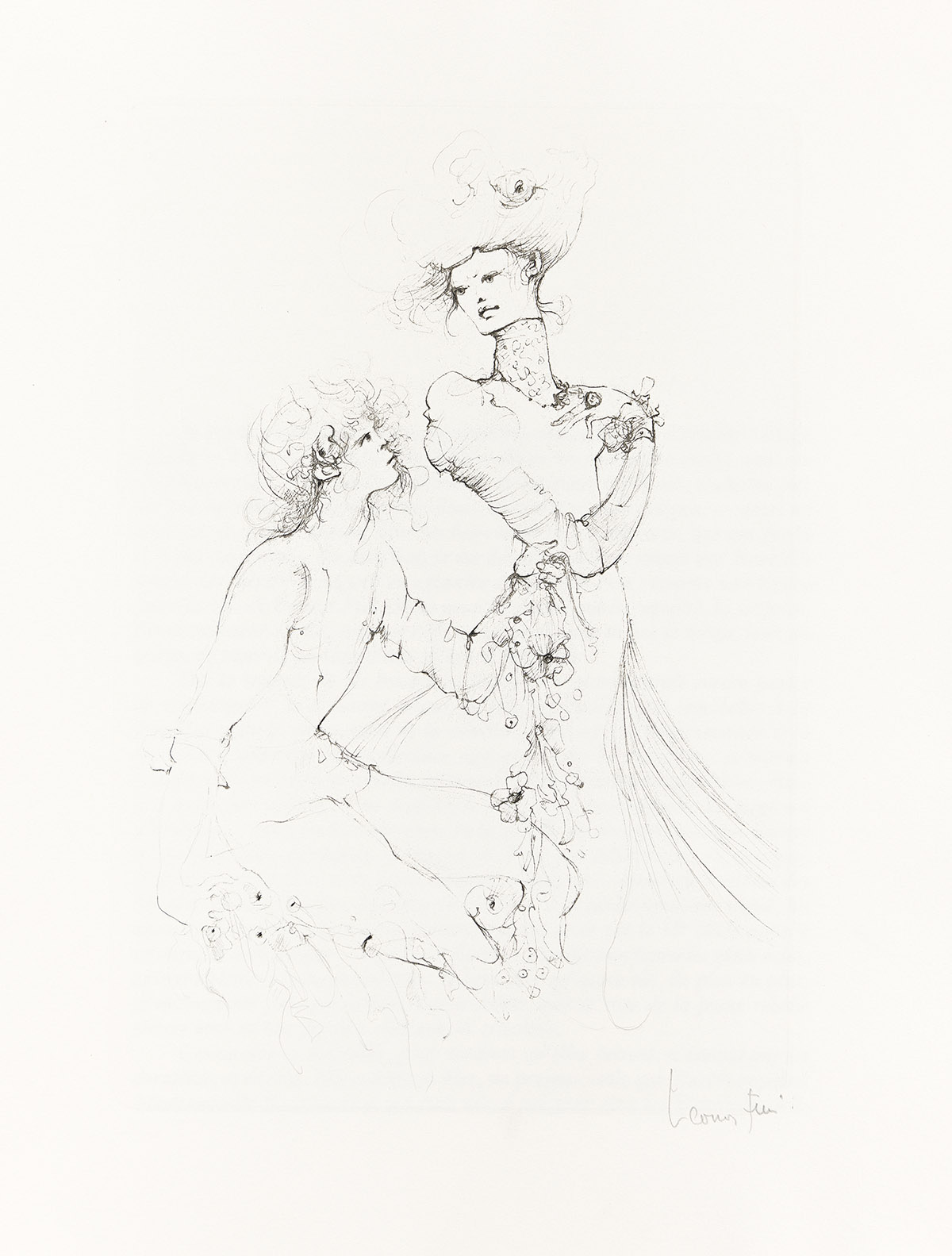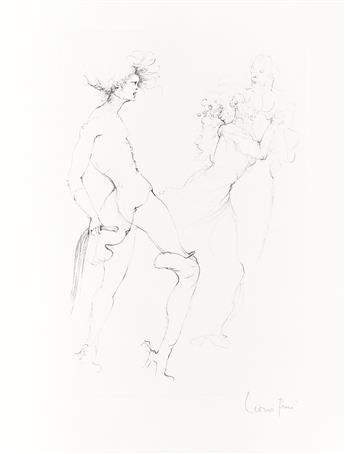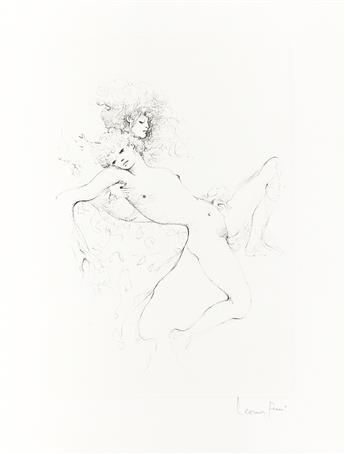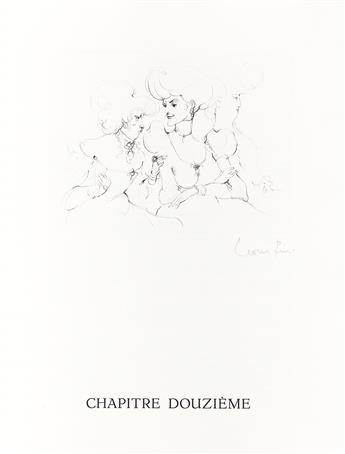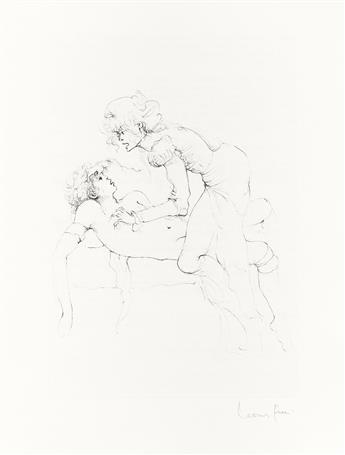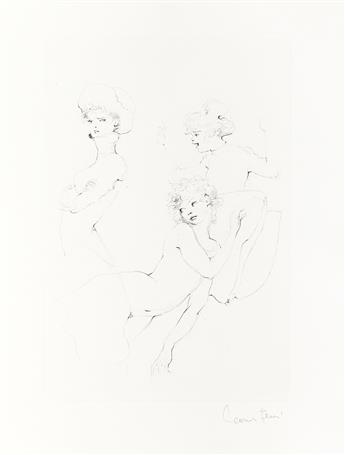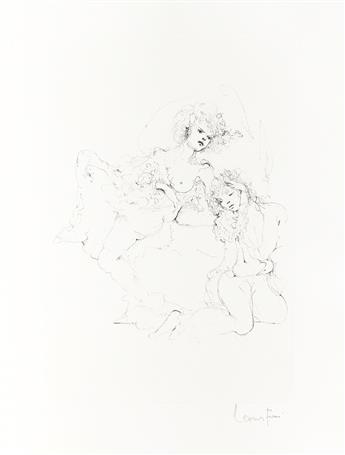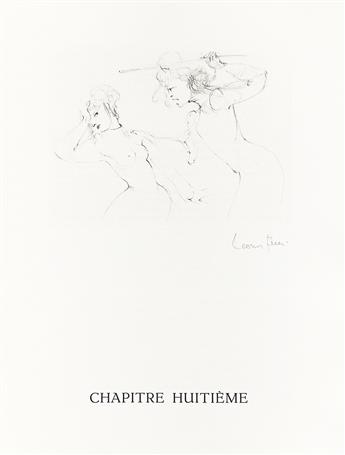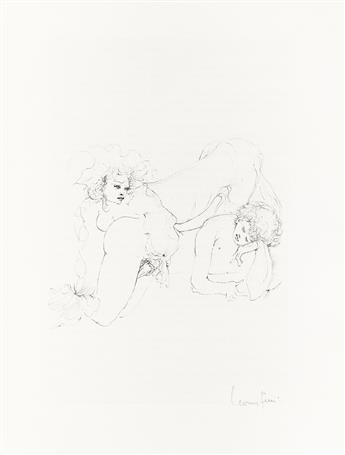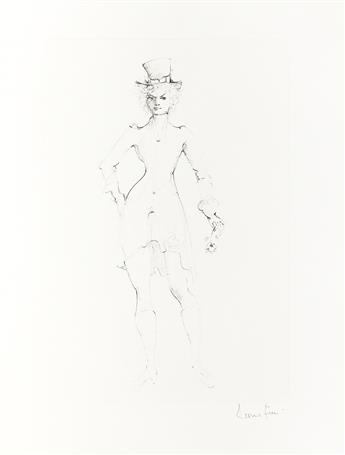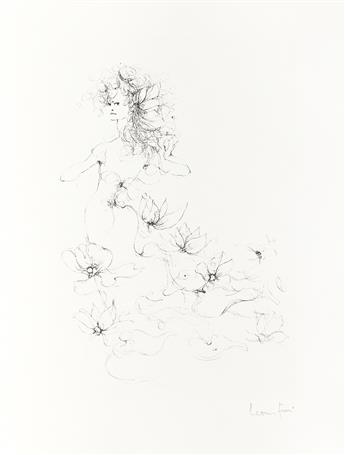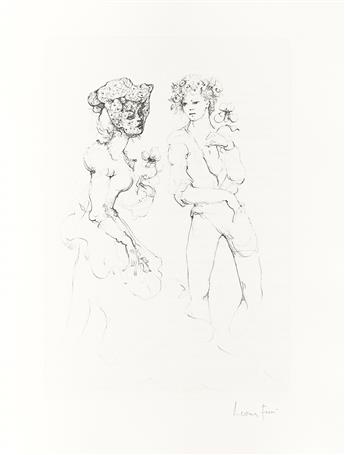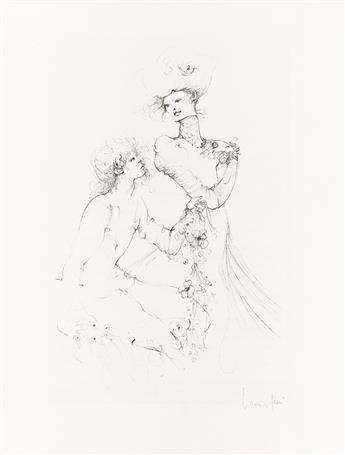Sale 2644 - Lot 70
Price Realized: $ 2,200
Price Realized: $ 2,750
?Final Price Realized includes Buyer’s Premium added to Hammer Price
Estimate: $ 3,000 - $ 5,000
LEONOR FINI (1908-1996)
Monsieur Vénus by Rachilde (Marguerite Vallette-Eymery).
Portfolio with complete text and 35 etchings. 415x325 mm; 16 1/2x13 inches (sheets), full margins, loose as issued.
One of 200 numbered copies on Rives, from the total edition of 275. Each of the etchings signed in pencil, lower margin. Signed in pencil and numbered 228 on the justification page. Printed by Dominique Viglino, Bourg-la-Reine. Published by Éditions d'Art Agori, Paris. Original printed decorative paste board portfolio. 1971.
Very good impressions.
This is a deluxe illustrated, 20th century artist's book version of the scandalous Belle Époque novel by the decadent writer Rachilde (the pen-name for Marguerite Vallette-Eymery), purportedly only in her early twenties at the time it was written, which tells the story of French noblewoman Raoule de Vénérande and her pursuit of sexual pleasure while creating a new and more satisfying identity for herself. The subversion of gender roles in Monsieur Vénus is twofold. First, there is the basic gender role reversal that can be observed in the power dynamics of the relationship between Raoule and her lover Silvert. Beyond the act of cross-dressing, Raoule takes on traditionally masculine roles: she pursues the object of her desire and commands the obedience of her lover. Second, there is a deeper exploration of gender identity. Raoule sees Silvert as an androgynous figure with some feminine characteristics which she then amplifies. When the book was first published in 1884 in Belgium, the author was tried on charges of pornography and was found guilty in absentia, with all copies of the book banned and ordered to be destroyed. In 1889, a significantly edited and watered-down version of the work was published in Paris.
Fini was an Argentine-Italian Surrealist painter, illustrator, designer and author; she was openly bisexual and had a polyamorous relationship. She was known for her bold, dramatic, and often erotic works. Fini was born in Buenos Aires, Argentina and moved to Italy when she was a young child. As a teenager, she studied at the Academy of Fine Arts in Milan. Fini also attended the University of Bologna, where she met Italian Futurist Filippo Marinetti and became part of the Italian avant-garde movement.
In the 1930s, Fini traveled to Paris and became part of the Surrealist circle, working in connection with André Breton, Max Ernst and Salvador Dalí. Throughout her career, she produced a wide range of works in various media, including paintings, illustrations, costumes, designs and books. Fini's paintings are characterized by bold colors and highly stylized figures, often depicting powerful female protagonists. Her later works frequently included mythological and allegorical elements.
Fini was a fiercely independent artist, rejecting traditional roles for women and refusing to be categorized or labeled. Her works have been exhibited widely in museums and galleries around the world with growing popularity posthumously, and her legacy continues to influence contemporary art today.
Exhibition Hours
Exhibition Hours
Aliquam vulputate ornare congue. Vestibulum maximus, libero in placerat faucibus, risus nisl molestie massa, ut maximus metus lectus vel lorem.



